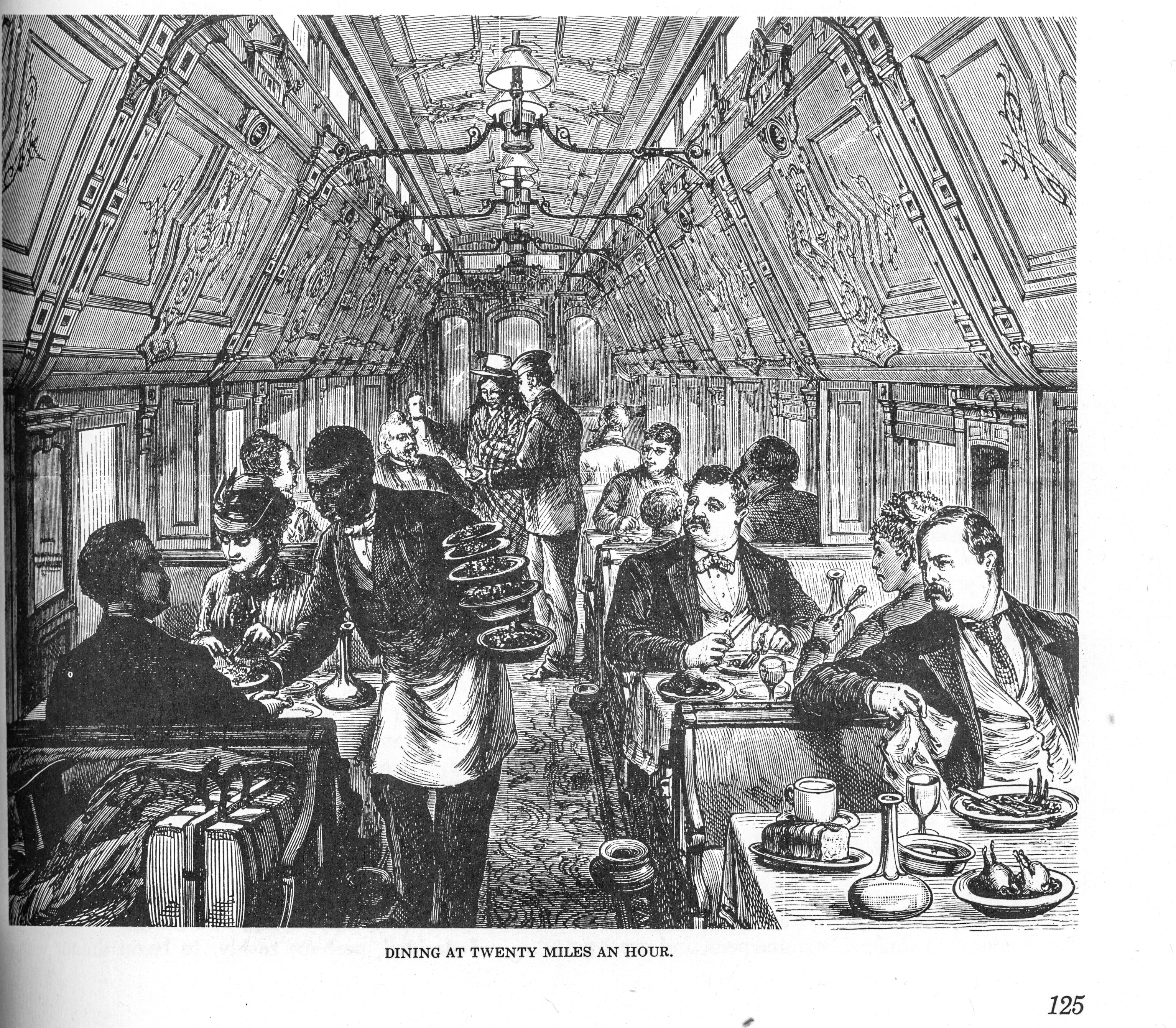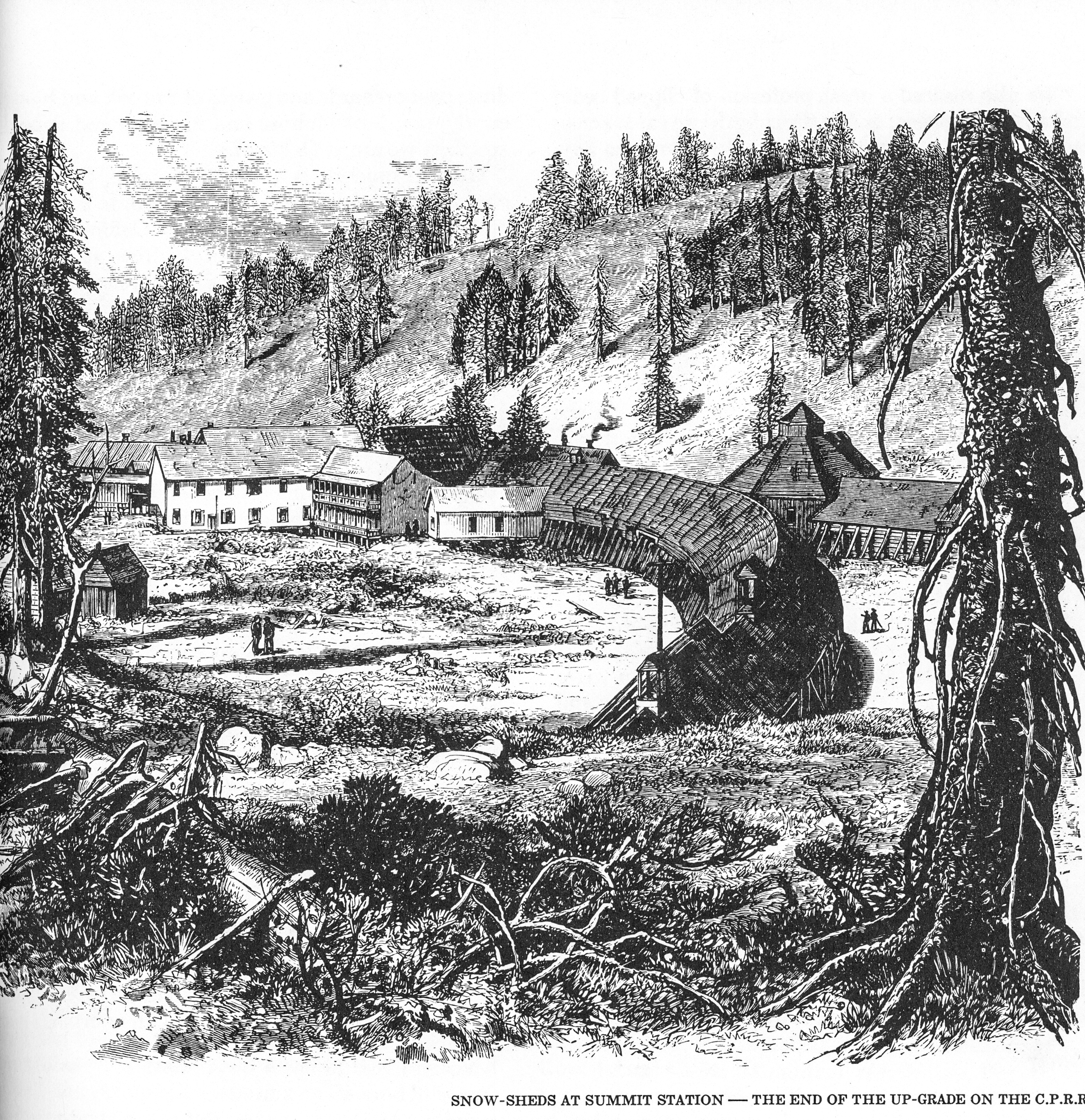Out West on the Overland Train
Across the Continent Excursion with Leslie’s Magazine in 1877
Richard Reinhardt 1967, 204 pages very large format
This month’s book is serendipity. Our research department had been looking for some access to Frank Leslie’s publications in digital form but that was not working out. At the same time the book review department was reviewing Overland in 1846 (see the December, ’21 Heirloom for volume I) and we thought we should review Volume 2 as well and ordered it – maybe. Out West on the Overland Train was delivered instead; maybe there is a reason. Upon opening this large book it looked really interesting.
Frank Leslie’s Illustrated Weekly was a popular eclectic 19th Century periodical and just one of Mr. Leslie’s magazines. In 1877 he set out with a staff of writers, artists, friends, and his wife on a cross-country tour on the transcontinental railroad. The resulting newspaper articles, edited by the author make up Out West...
The assemblage of articles is a nice entry into 19th Century America and the West. The articles are enhanced by perhaps one hundred original illustrations from Leslie’s newspaper. Even just paging through the book is interesting seeing what the American West was like as captured by artists in 1877. Then there’s the added bonus of this book being published in 1967. The Author, Richard Reinhardt, took the train across the country too, repeating Mr. Leslie and his team’s trip. 1967 is more than fifty years ago so we get a slice of the American West not just in 1877, but also in 1967. Donner Summit is only casually mentioned but there is a very nice picture of Summit Station in 1877 along with the Summit Hotel (first version). The book is divided into chapters and the chapters are mostly stops on the railroad. Each 1877 chapter is followed by its 1967 counterpart.
1877 was only eight years after the completion o the transcontinental railroad. There were 38 states in the United States. The West was mostly just territories and wild. The articles that came out of the transcontinental trip scratched an itch Americans had for the West. An ordinary train trip took seven days. The Leslie group’s trip was a bit longer including a number of side trips. The articles ran in Leslie newspapers for two years.
The book is a travelogue across American by train in 1877 full of descriptions, observations, and stories illustrated by pictures. We must wonder at the veracity of some of the reporting though. For example on visiting the water works in Chicago there is a description of the intake for Chicago’s water system, some of the water, “purer than the rest, was filled with minute and innumerable fish. The finny tribe became ingredients in the dishes and beverages of every repast. Even the cows were noted for the vast number of minnows in their milk… Fish-spawn floated in the air. It got into casks and barrels and bottles, in spite of all possible precautions. The fish hatched out in the strongest old whiskies….” You get the idea.
Other observations are really colorful. Talking about passengers in the “sufficiently commodious ‘Emigrant House’” waiting room the newspaper says, “women, children, aged grandfathers, border ruffians, dogs, gambling sharps, peripatetic vendors, soldiers, thieves, and pickpockets are jumbled together in a heterogeneous mass. A confused babel of sounds and the clinking of glass denotes the every present proximity of the drinking bar and its deluded votaries. A mother dandles a child in her arms, two ferocious-looking loungers within a couple of feet of her are dilating on the merits of their six-shooters; and within a yard a railroad sharp has pinned a grizzle-haired miner to the wall with the enraptured sight of his bogus chains and lockets…”
 There are lots of stories about noteworthy events that transpired in particular spots. After a description of Native American fights Mr. Leslie says, “It is well that these battles leave no scars behind them or the whole surface of this lonely land would be darkened with ugly reminder of bloodshed.” There are snippets from contemporary newspapers such as about Nebraska Arbor Days where the State encouraged the populating of the prairie with trees; the “little terror of the plains,” a particularly bad man; a scalped man who liked to tell his story and show off his scars; bits of advice like where to get liquor in the “oasis in Temperance desert;” (Denver) and a comparison between Chinese and Irish (with 19th Century prejudices). There is a big digression to describe the Mormons.
There are lots of stories about noteworthy events that transpired in particular spots. After a description of Native American fights Mr. Leslie says, “It is well that these battles leave no scars behind them or the whole surface of this lonely land would be darkened with ugly reminder of bloodshed.” There are snippets from contemporary newspapers such as about Nebraska Arbor Days where the State encouraged the populating of the prairie with trees; the “little terror of the plains,” a particularly bad man; a scalped man who liked to tell his story and show off his scars; bits of advice like where to get liquor in the “oasis in Temperance desert;” (Denver) and a comparison between Chinese and Irish (with 19th Century prejudices). There is a big digression to describe the Mormons.
The meal stops were typically twenty minutes when enabled the tourists to walk about. In Sidney, Nebraska there’s a nice description as an example of descriptions of other stops, “Higher up the bluffs, the sod-roofed dugouts are seen, each bristling with a rusty stovepipe in lieu of chimney and some boasting a roughly glazed window beside the low doorway. There is a goodly show of clothes lines up among these simple habitations, with flapping linens dancing about in the wind; a horse or two tethered along the bluff, rubbing his note on the sterile soil; a wandering cow; and, of course, children; but here as elsewhere, we are obliged to take the female population on trust, for not a solitary representative do we see.
“The female members of our party brave the savage winds on the platform and stare wildly about in search of desperadoes. Every man, being possible murderer and a most probable gambler, is invested with a dark and awful interest, albeit most to them are sober, quiet-looking citizens, a little given to excess hair, eccentric as to hats, and utterly rejecting ‘biled shirts,’ but by no means villainous in physiognomy…” They interview one of the inhabitants, “they gambles and fights most all the time, and they kills somebody among ‘emselves every now’n’ then…”
The descriptions are not just of the physical but also serve as social commentary.
Sidney was apparently a jumping off spot for gold in the Black Hills. Observing the people headed to the gold fields, “whether they will be as successful as the Argonauts of ’49 is still a question; but one pities the women who cast their lots with them - tired, desponding - looking women, young and old, carrying heavey babies and herding offspring of larger growth - whom one sees wearily sitting about the outfitting shops or among the shabby boxes and bundles outside.”
It turns out that Sidney was “where Union Pacific conductors used to warn passengers not to get off if they valued their lives.” There was not much in Sidney in 1967, hence only a one minute stop.
In Chapter 13, titled “The Gracious Life of the Place Car Traveler 1877: Oyster Soup by Lamplight” it turns out that traveling by train was as comfortable as a hotel and not like the warnings one lady received that said it would turn her dark like an “Ethiop” and prevent dressing, undressing, and bathing like a Christian. Nor were the other “discomforts and dangers” likely. Instead, the reality was “majestically working” porters, berths “spread with fresh, clean sheets ,and heavy rugs, piled with little square pillows, and duly shut with “voluminous curtains.” Sleep was easy but competed with the scenery that was “full of fascination” and “new risen sunshine across you pillows.” Sleep took passengers easily though, “the slight monotonous rocking of your easy, roomy bed, and the steady roar and rattle of the train lull you into dreamland as a child is rocked by his nurse’s lullaby.”
Another chapter tells how people who don’t have sleeper cars travel which is not so comfortable. See the picture here.
The Leslie party crossed the Sierra at night . A few stood on the rear platform with a “few extra wraps and a cigar apiece” to brave the winds and “an airy exposure.” Then they hit the snowsheds, “very much in our way at this stage of the journey… we wish that they had never been built, or at least were portable commodities… long gloomy tunnels, winding along for miles, with only here and there an opening that serves to show us in one little glimpse what sort of world this is…. There is scarcely a break in the monotonous succession of sheds, and it so happens that some of the finest points of scenery are congregated along this section of the route.”
Then on to Colfax and San Francisco where there are chapters devoted to the city, Chinatown, and rich people.


